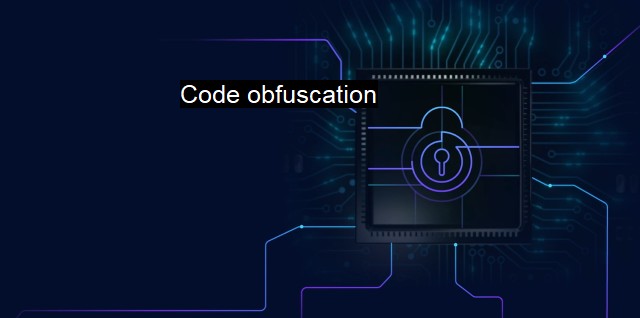What is Code obfuscation?
Exploring the Importance of Code Obfuscation in Cybersecurity: An Overview of Techniques to Protect and Secure Software Code
Code obfuscation, in the context of cybersecurity and antivirus applications, refers to a technique utilized to protect software codes from unauthorized access, manipulation, and reverse engineering. It’s about camouflaging or distorting the code in a way that it remains fully functional but becomes extremely hard to understand, and practically impossible for anyone to tamper with it maliciously.Derived from a Latin phrase, 'obfuscation' basically means 'to darken.' So code obfuscation is 'darkening' or 'hiding' the code from prying eyes. The purpose is to make the actual source code look obscure, cryptic or jumbled up to anyone who isn't the author, so they can't understand it or modify it.
Executing code obfuscation properly guarantees that though the code could be seen, it cannot be comprehended entirely. Both machines and people reading the code find it intricate and practically unreadable. Instead of clear, discernable lines of instructions in a program, what they encounter are complex, puzzling lines of program commands which do not gravitate towards logical reasoning.
Code obfuscation overlaps both cybersecurity and antivirus spaces as it helps in safeguarding the integrity and confidentiality of the code. In the cybersecurity frame, hackers frequently dedicatedly inspect numerous software codes to find any vulnerability or backdoor to exploit. With obfuscated codes, this exploit becomes almost impossible since even if they have access to the code, understanding it is incredibly challenging.
In relation to antivirus applications, code obfuscation is a double-edged sword. It's used by antivirus software developers to make their code robust against malicious threats. it's also adopted by malware authors to bypass detection from antivirus scanners. This primarily happens because antivirus programs operate by recognizing patterns in the code of malwares. If the code structure is drastically and intelligently altered using obfuscation techniques, it becomes hard for antivirus programs to detect and identify them, thus providing them with a veil of invisibility.
Several techniques can be used for code obfuscation. One common example is renaming publicly accessible program elements. This technique (also known as name mangling) replaces meaningful variable names with incoherent symbols, making it harder for anyone to tell what the code is supposed to do.
Other obfuscation methods include control flow obfuscation, which alters the program's control flow without changing its output; and data obfuscation, where data and values within a program are encrypted or distorted. There are also transformer-based techniques like instruction substitutions, which replace traditional instructions with more obscure formulations. A protective layer of obfuscation can be added with debug-flag transformations and force binding RTTI to memory.
It's important to note that code obfuscation isn’t a standalone strategy for securing program codes from unauthorized parties. Rather, it adds an extra defensive layer, making cracking the code an exhausting task. It’s a proactive cybersecurity practice that increases things like anti-malware safeguards.
Code obfuscation fosters cybersecurity and antivirus measures by making source code-based attacks laborious and comprehensive software analysis nearly impossible. Despite its useful application within the software industry, it also poses a danger if seized by malicious attackers aiming to evade antivirus detection. Sophisticated balance and approach to obfuscation methods can however enable antivirus software to impede these attempts, maintaining a safe software environment.

Code obfuscation FAQs
What is code obfuscation?
Code obfuscation is a technique used in computer programming to make the source code more difficult to understand and analyze by humans. The objective is to make the code unreadable, while maintaining its functionality.Why is code obfuscation used in cybersecurity?
Code obfuscation is a common technique used by malware developers to prevent antiviruses from detecting and analyzing the malicious code. By obfuscating the code, developers can hide the true intent of the software, making it more difficult to detect and mitigate.How does code obfuscation work?
Code obfuscation works by changing the structure of the code without changing its functionality. This is done by applying a set of obfuscation techniques such as renaming variables, splitting functions, adding redundant code, or using encryption. The result is a code that is much harder to read and analyze, even by experienced programmers.Does code obfuscation provide complete protection against malware detection?
No, code obfuscation is not a foolproof method to protect against malware detection. While it can make it more difficult for antivirus programs to analyze the code, it doesn't make it impossible. Advanced malware detection systems can still detect obfuscated code by analyzing its behavior and comparing it to known patterns of malicious activity.| | A | | | B | | | C | | | D | | | E | | | F | | | G | | | H | | | I | | | J | | | K | | | L | | | M | |
| | N | | | O | | | P | | | Q | | | R | | | S | | | T | | | U | | | V | | | W | | | X | | | Y | | | Z | |
| | 1 | | | 2 | | | 3 | | | 4 | | | 7 | | | 8 | | |||||||